I'm going to give an example for region and country. You can replace this with any other options that fit your needs.
You are going to need the following:
- 2 custom lists (one of the region and another one for the country)
- Document library or list that will use the 2 custom lists mentioned in the bullet above
- Document library where to save your code to
- jQuery (you can download it from here: http://docs.jquery.com/Downloading_jQuery)
- SPSServices jQuery (you can download it from here: http://spservices.codeplex.com/releases)
I managed to make it work using jquery-1.8.1.min and jquery.SPServices-0.7.1a.min. You may want to try other versions if it doesn't work for you. Sometimes it's a bit of trial and error, like with many SharePoint things.
1. Download the two files and upload them to a document library in SharePoint of your choice and to which you have permissions over in the site;
2. Create the first custom list. In the example, I'm going to name it lookupRegion. Then I'm going to modify some settings, such as removing the ability to attach files, as well as adding a description ("This is the region name") and enforcing unique values for the Title column. Then I'm going to add a few values in there:
Title: Add a description ("This is the country name") and enforce unique values;
Region: Create a region column; this column is a lookup column to the Title field in the lookupRegion custom list and it is a required column (you want to make sure that a region is provided).
4. Add a few values in this list:
<script language="javascript" src=" /URL_to_your_code_location_on_your_SharePoint_site/jquery-1.8.1.min.js"></script>
<script language="javascript" src=" /URL_to_your_code_location_on_your_SharePoint_site/jquery.SPServices-0.7.1a.min.js"></script>
<script language="javascript" >
$(document).ready(function() {
$().SPServices.SPCascadeDropdowns({
relationshipList: "lookupCountry",
relationshipListParentColumn: "Region",
relationshipListChildColumn: "Title",
parentColumn: "Region",
childColumn: "Country",
debug: true
});
});
</script>
Note: Replace the text in blue above with the URL to the location of your files on your SharePoint site. I prefer to use absolute URLs.
7. Save the file under the name of cascadingdropdown.js (this is very important).
8. Upload this file to the same library where you saved your other jQuery files, or to any other library of your choice.
9. Go back to the Regional Files document library and select Default Edit Form from the Form Web Parts icon in the Customize Library section of the ribbon.
11. Upload a file and see if it works. The image below shows that it works for me.
relationshipList: This is the name of the list where we have kept the relationship (in our example, lookupCountry);
relationshipListParentColumn: This is the parent column (Region) in the relationship list (lookupCountry);
relationshipListChildColumn: This is the child column (Title) in the relationship list (lookupCountry);
parentColumn: This is the parent column (Region) in the library (or list) where we want to implement this (Regional Files);
childColumn: This is the child column (Country) in the library (or list) where we want to implement this (Regional Files).
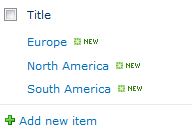
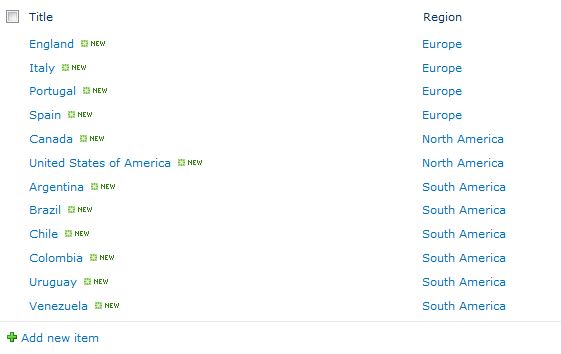

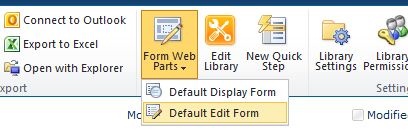
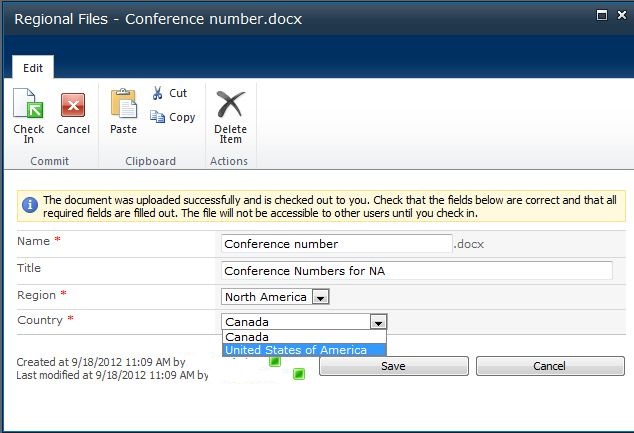
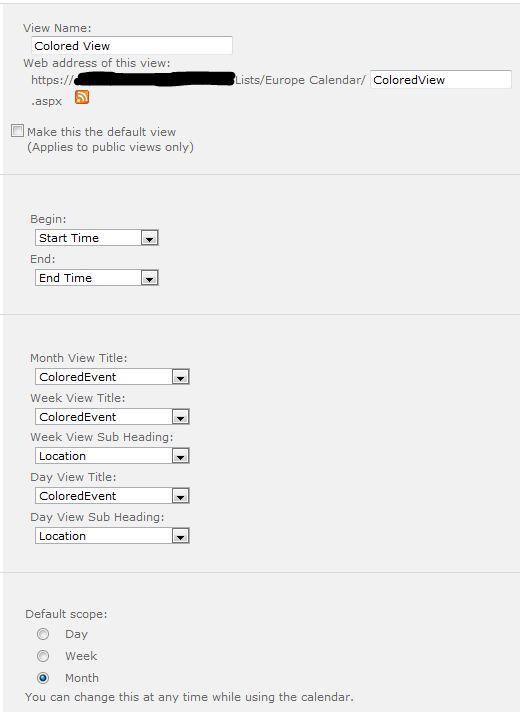
 RSS Feed
RSS Feed